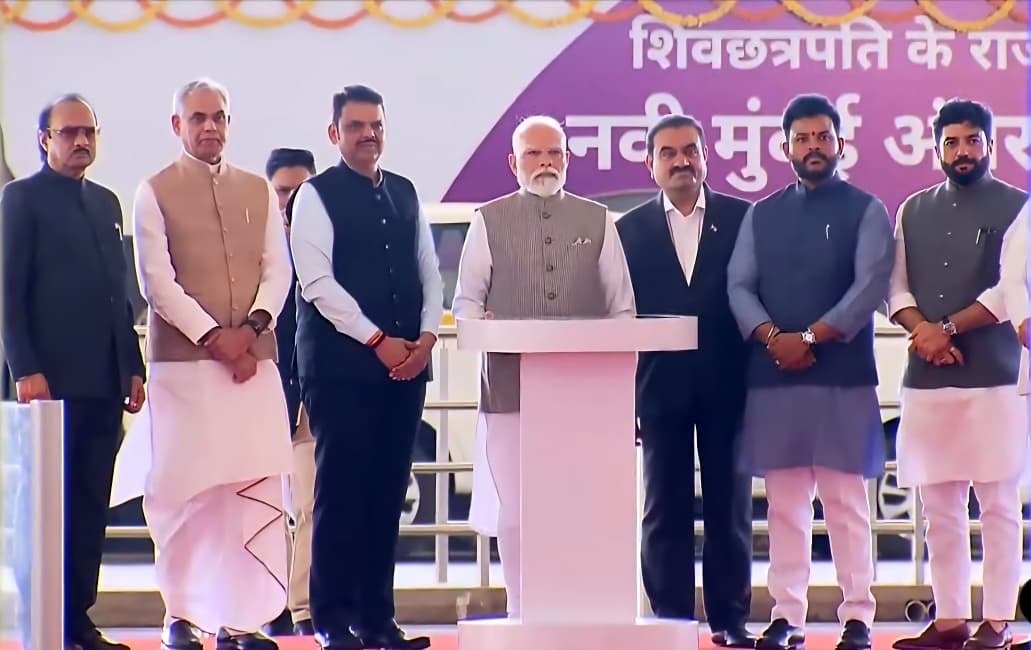Prime Minister Narendra Modi inaugurated the Navi Mumbai International Airport (NMIA), marking a historic moment in India’s aviation journey. Describing it as one of the nation’s most ambitious infrastructure projects, he said Mumbai’s long wait for its second international airport was finally over. Built on the land of Chhatrapati Shivaji Maharaj, the airport’s lotus-inspired design symbolizes culture and prosperity. The Prime Minister emphasised that NMIA will not only strengthen India’s global connectivity but also serve as a major catalyst for Maharashtra’s economic growth, linking local farmers and small industries to international markets.
Developed under a Public-Private Partnership (PPP) between Adani Airport Holdings Limited (AAHL) and CIDCO, NMIA represents a transformative stride toward the Government’s Viksit Bharat 2047 vision. Before his address, the Prime Minister toured the airport, reviewing its world-class facilities and technological features alongside senior leaders including Devendra Fadnavis, Ajit Pawar, and Jeet Adani. He lauded the airport’s role in making India a global hub for trade, tourism, and aviation innovation.
Chairman Gautam Adani called NMIA more than just an airport — a gateway to India’s future. He described it as infrastructure that meets today’s needs while creating tomorrow’s opportunities. “Every flight through these terminals will carry the pulse of a defining superpower,” he said, underlining NMIA’s role in shaping India’s global identity. With an initial capacity of 20 million passengers per annum (MPPA), NMIA will eventually expand to 90 MPPA, making it one of the largest airports in India.
Jeet Adani, Director at Adani Airport Holdings Ltd., highlighted that NMIA combines cutting-edge technology, sustainability, and passenger-first experiences. Complementing the Chhatrapati Shivaji Maharaj International Airport, NMIA reinforces Mumbai’s position as a major aviation hub. Its seamless multimodal connectivity to the Mumbai Trans Harbour Link, metros, rail networks, and waterways will reduce travel times, improve logistics, and strengthen western India’s economic linkages.
Inspired by the Lotus, NMIA’s architecture blends Indian heritage with modern design. The first two phases will feature a single runway and terminal handling 20 MPPA, with future expansion to four runways and multiple terminals. A dedicated cargo terminal will enhance India’s trade efficiency, especially for perishable and express goods. The airport also incorporates renewable energy systems and green building practices, reinforcing India’s commitment to sustainable development.
The inauguration of NMIA stands as a symbol of modern engineering, collaboration, and national pride. As India moves toward its 2047 development vision, NMIA will serve as a beacon of innovation and progress in global aviation. Covering over 1,160 hectares, it reflects a perfect fusion of sustainability, technology, and design — positioning India as one of the world’s leading connectivity hubs.


